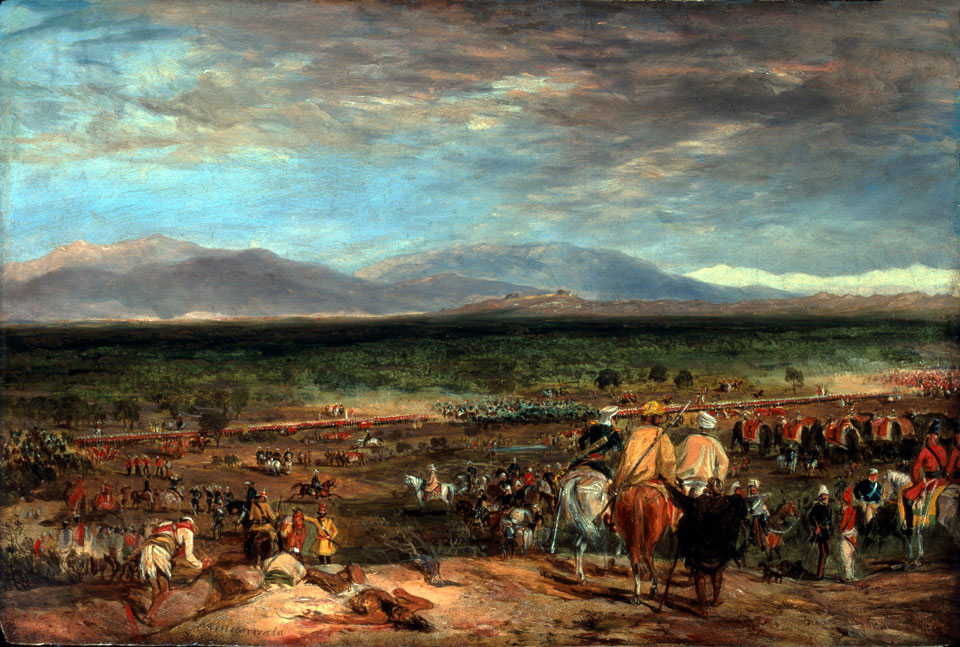
Online Collection
« Prev - 1 of 1 results - Next »
Battle of Chilianwala, 13 January 1849
Oil on board by Lieutenant (later Colonel) Charles Becher Young (1816-1892), Bengal Engineers, 1849 (c).
On 13 January 1849, near the village of Chilianwala, north-west of Lahore, General (later Field Marshal ) Lord Hugh Gough, (1779-1869), Commander-in-Chief India, led his army into the first major battle of the 2nd Sikh War (1848-1849). The 24th (The 2nd Warwickshire) Regiment of Foot and the 25th and 45th Regiments of [Bengal] Native Infantry advanced to attack the guns of the Sikh Army. Outstripping the native infantry, the 24th Regiment arrived upon the enemy prematurely but, under instructions not to fire, they fixed bayonets and charged the deadly artillery. In this gallant but foolhardy attack, the regiment suffered 515 casualties including 238 killed. 'Their conduct', wrote General Sir Charles Napier, 'has never been surpassed by British solders on a field of battle'.
However, the actions of the elderly and infirm Lieutenant-Colonel Alexander Pope (1787-1849), Brigadier commanding the 2nd Cavalry Brigade, hardly merited praise. After difficulties in organising his cavalry to face the right direction, Pope gave an indistinct instruction which was interpreted as ordering a retreat: the brigade's flight was just halted by an Army chaplain. The enormous casualties which were inflicted on a larger and better-equipped force changed Indian perceptions of the invincibility of the British. However, the Sikh Army failed to drive home their advantage, so Gough claimed the battle as his victory. Another participant described it as 'the nearest approximation to a defeat of any of the great conflicts of that power in the East'. The artist was present at the battle as a subaltern in the Bengal Engineers.
NAM Accession Number
NAM. 1967-02-46-1
Copyright/Ownership
National Army Museum, Out of Copyright
Location
National Army Museum, Global Role gallery
Object URL
https://collection.nam.ac.uk/detail.php?acc=1967-02-46-1

